The series was issued several months after the establishment of the Provisional Government proclaimed in the region after its separation from the Papal State.
The stereotypes were made in the Fratelli Amoretti foundry in Bologna and the printing at the Della Volpe and Del Sassi Government Printing Works.
The gum is generally brownish, semi-glossy and spread evenly.
They were printed in black on machine-made colored paper of various thicknesses, without watermark
The province of Romagna was originally included in the Papal States. The stamps of Romagna were only used during the provisional government from 1st September 1859 to 12 January 1860. It was annexed by Sardinia afterwards.
Genuine Stamps
Genuine Features
These features apply to all the values
1. Tip of this L slightly lower than the first L
2. Open circle and top right of circle is lower than the left one
3. Serifs tend to be curved
4. Square dots and top in line with the crossbar of the large A
5. Break here
5a. Right upright much shorter than left one
6. Long inclined protrusion
6a. Left leg slightly thinner than right one
7. Top of A is flat
8. Dent in O
8a Dent in R
9. Break here
10. Break here
10a Break here
11. Crossbar is inclined
11a. Serif foot tends to be curved
12. Break Here
NOTE - Breaks are not always visible depending on inking
Forgeries
All the forgeries are easy to spot as they lack the genuine features, fonts & letters do not match
1/2 baj
 |
| Original |
Forgeries
 |
| Billigs notes this forgery as a Brussels Type I |
1 Baj
 |
| Original |
Forgeries
2 Baj
 |
| Originals were not printed in blocks of 4 |
3 Baj
4 Baj
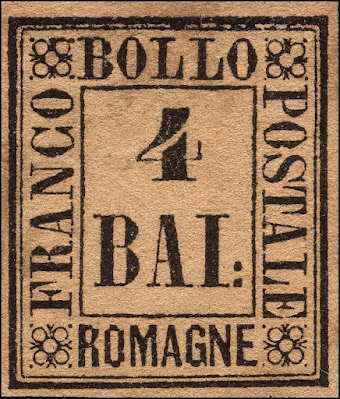 |
| Original |
Forgeries
 |
| Billigs notes this as a Type VIII forgery |
5 Baj
6 Baj
 |
| Original |
Forgeries
8 Baj
20 Baj
Fournier Blocks
These are corner blocks from full sheets sold but not forged by Fournier
Reprints, Proofs & Essays
Official reprints do not exist.
However private reprints exist, Usigli obtained the plates from these stamps
He made private reprints and essays and also made proofs, by adding a 7 lined frame all around the stamps.
He sold the plates to a certain Bonasi (Giulio Cesare Bonasi, or Count Bonasi), who sold them again to the stamp dealer Moens in Belgium.
Moens also made private reprints from retouched plates (the upper right circle in the upper right ornament is closed instead of open as in the original stamps in 1892.
These retouched plates then were passed on to Julius Goldner, a forger from Hamburg, Germany.
Goldner then printed another set of 'reprints' in 1897.
They can be recognized by the badly retouched corner lines of the inner frame, and the fact that most of the dots around the corner rosettes are missing


















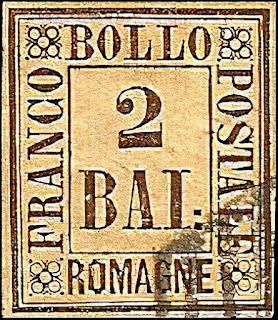






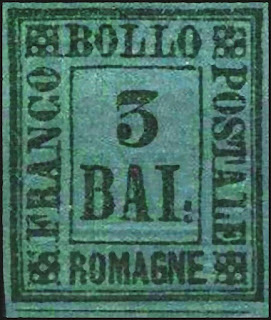






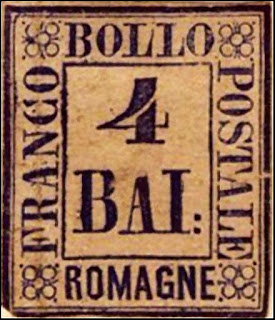






















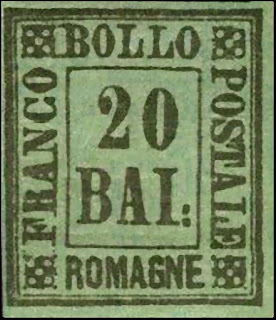








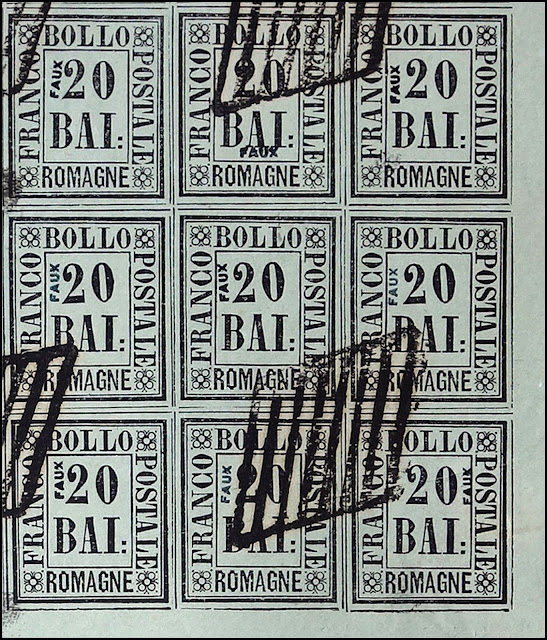



No comments:
Post a Comment
THANK YOU for the feedback. Your comment will be reviewed and appear on this blog within 24 hours
Do you have any pic to share? Use this code [img]your-image-url-here[/img]